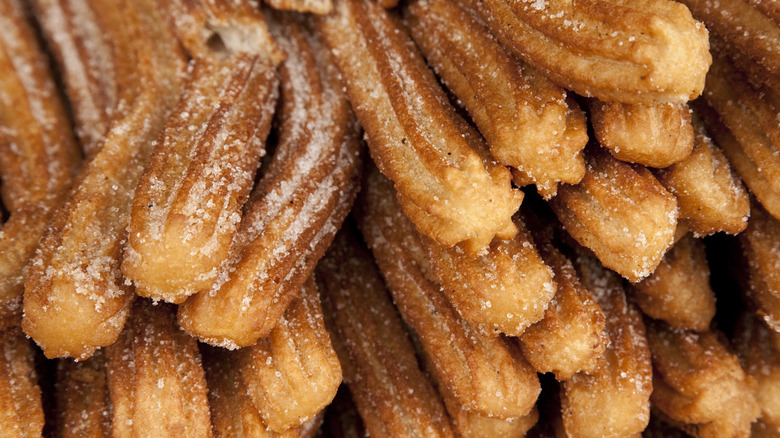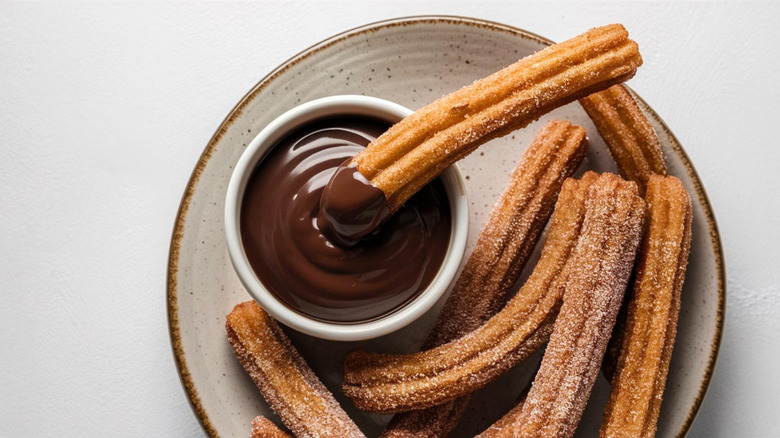The History Of Churros Is Much More Mysterious Than We Thought
Countries around the world have their own version of deep-fried dough. Italy has zeppole, China has youtiao, and Spain has churros. Of all fried dough treats, churros have probably gained the most popularity worldwide. This fried dough has it all: an aesthetically pleasing shape, textural contrast thanks to a crispy outer layer and soft interior, and, of course, a buttery, sweet taste. Thanks to their popularity, churros are everywhere; people made their own Disney churros to bring a little bit of joy to their coronavirus quarantine, and, for a brief period, churros were even reintroduced to the Costco food court. But how did the original Spanish doughnut come to life? Well, it's not all that clear.
There are several theories as to how churros were invented. One theory is that Spanish shepherds created churros. Since food was scarce in the mountains, they made a dough from flour, water, and salt and fried it to make a filling treat. (In this telling, the churros' signature curly shape was inspired by the churra sheep's horns.) This story became popular during the 19th century when these doughnuts became known as churros in Spain.
There is just one problem with this story; Arabic records show that churros were being eaten in the Iberian peninsula from as early as the 12th century. There are even suggestions that the Ancient Romans ate a type of churro. So, if Spanish shepherds invented this delicacy, how come people had already been eating them for centuries?
Churros may have originated in China
There is another theory that dates back to the 16th century, a time when Portuguese explorers traveled to China. Youtiao is a type of Chinese doughnut, which is lightly salted and usually eaten at breakfast. This theory suggests that, when the Portuguese discovered this treat, they decided to make their own version of youtiao once returning home. Sugar was added to make it a sweeter delicacy, and choux dough was used to give the churro its famous crispy texture. Once the Spanish got word of these, they further adapted churros by piping them into star shapes. This gives churros a bigger surface area, making them crispier.
What adds further weight to this theory is that thick hot chocolate, a classic accompaniment to churros, was introduced to Spain from South America during the 16th century as well. Perhaps it's no coincidence that churros and hot chocolate are seen as such a classic pairing. (You can make your own simple take on a churro hot chocolate dip using these two ingredients.)
Both of these theories still fail to explain how variations of churros were being eaten by civilizations that predated the modern Spanish. The only explanation is that many disparate civilizations must have discovered the wonders of fried dough for themselves. This means that the person responsible for first frying dough will probably forever remain unknown. Whoever it was, we all owe them a great deal of gratitude.

